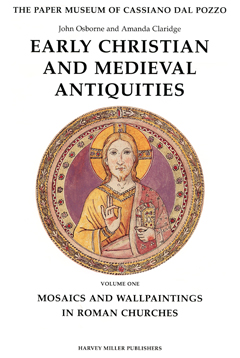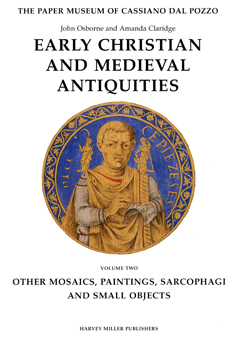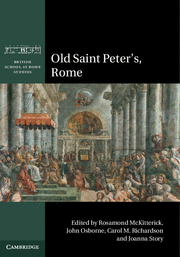
John Osborne
Distinguished Research Professor and Retired Faculty Member
| Degrees: | B.A. Art History (Carleton), M.A. Medieval Studies (Toronto), Ph.D. History of Art (London) |
| Email: | john.osborne@carleton.ca |
John Osborne is a cultural historian of the early medieval Mediterranean, with a specific interest in the material culture of the cities of Rome and Venice. He has also written more broadly on the topography of medieval Rome, saints’ cults, cultural transmission between western Europe and Byzantium, the Roman catacombs, and Counter-Reformation interest in Early Christian and medieval antiquities. Following a “conversion” experience in Venice in the summer of 1970, he pursued a B.A. in art history at Carleton, followed by an interdisciplinary Master’s in Medieval Studies at the University of Toronto. His doctoral thesis at the University of London (Courtauld Institute of Art) examined the early medieval paintings in the excavated “lower church” of San Clemente, Rome. Subsequently he has spent part of every year in Rome, based at The British School, which in 2006 appointed him as an Honorary Fellow. He taught at the University of Victoria (1979-2001), and Queen’s University (2001-2005), before returning to Carleton in 2005 as Dean of the Faculty of Arts and Social Sciences.
Publications
Books
John Osborne, Early Mediaeval Wall-Painting in the Lower Church of San Clemente, Rome (Garland Press, New York, 1984)
John Osborne, Master Gregorius: The Marvels of Rome [translated with an introduction and commentary] (Pontifical Institute of Mediaeval Studies, Toronto, 1987)

C. Brown, J. Osborne and C. Kirwin eds., Rome: Tradition, Innovation and Renewal (University of Victoria, Victoria, 1991)
John Osborne and Amanda Claridge, The Paper Museum of Cassiano dal Pozzo. Series A, Part II. Early Christian and Medieval Antiquities. Volume 1: Mosaics and Wallpaintings in Roman Churches (Harvey Miller, London, 1996)

John Osborne and Amanda Claridge, The Paper Museum of Cassiano dal Pozzo, Series A, Part II. Early Christian and Medieval Antiquities. Volume 2: Other Mosaics, Paintings, Sarcophagi, and Small Objects (Harvey Miller, London, 1998)

J. Osborne, J.R. Brandt and G. Morganti eds., Santa Maria Antiqua al Foro Romano cento anni dopo. Atti del colloquio internazionale, Roma, 5-6 maggio 2000 (Campisano editore, Rome, 2004)

C. Bolgia, R. McKitterick, J. Osborne eds., Rome Across Time and Space: Cultural Transmission and the Exchange of Ideas, c. 500-1400 (Cambridge University Press, 2011)

Rosamond McKitterick, University of Cambridge; John Osborne, Carleton University, Ottawa; Carol M. Richardson, University of Edinburgh; eds., Old Saint Peter’s, Rome (Cambridge University Press, 2013)

Selected Articles
“The portrait of pope Leo IV in San Clemente, Rome: a re-examination of the so-called ‘square nimbus’ in medieval art”, Papers of the British School at Rome 47 (1979), 58-65.
“The ‘Particular Judgment’: an early medieval wall-painting in the lower church of San Clemente, Rome”, The Burlington Magazine 123 (1981), 335-341.
“The painting of the Anastasis in the lower church of San Clemente, Rome: a re-examination of the evidence for the location of the tomb of St. Cyril”, Byzantion 51 (1981), 255-287.
“A note on the date of the Sacra Parallela (Parisinus graecus 923)”, Byzantion 51 (1981), 316-317.
“Early medieval painting in San Clemente, Rome: the Madonna and Child in the niche”, Gesta 20 (1981), 299-310.
“Early medieval wall-paintings in the Catacomb of San Valentino, Rome”, Papers of the British School at Rome 49 (1981), 82-90.
“From Turtura to Alfanus: funerary monuments in early medieval Rome”, RACAR 9 (1982), 3-8.
“Early medieval wall-painting in the church of San Clemente, Rome: the Libertinus cycle and its date”, Journal of the Warburg and Courtauld Institutes 45 (1982), 182-185.
“The earliest antiquarian description of Caracalla’s Serapeum on the Quirinal Hill in Rome”, Echos du Monde Classique/Classical Views 27 (1983), 220-225.
“The tomb of Alfanus in S. Maria in Cosmedin, Rome, and its place in the tradition of Roman funerary monuments”, Papers of the British School at Rome 51 (1983), 240-247.
“Death and burial in sixth-century Rome”, Echos du Monde Classique/Classical Views 28 (1984), 291-299.
“The Roman catacombs in the Middle Ages”, Papers of the British School at Rome 53 (1985), 278-328.
“Early mediaeval wall-painting in the Roman catacombs: patronage and function”, RACAR 12 (1985), 197-200.
“Peter’s Grain Heap: a medieval view of the ‘Meta Romuli'”, Echos du Monde Classique/Classical Views 30 (1986), 111-118.
“The atrium of S. Maria Antiqua, Rome: a history in art”, Papers of the British School at Rome 55 (1987), 186-223.
“Wall-paintings as documents: an example from the atrium of S. Maria Antiqua, Rome”, RACAR 16 (1989), 7-11.
“The use of painted initials by Greek and Latin scriptoria in Carolingian Rome”, Gesta 29 (1990), 76-85.
“Lost Roman images of Pope Urban V (1362-1370)”, Zeitschrift für Kunstgeschichte 57 (1991), 20-32.
“Textiles and their painted imitations in early medieval Rome”, Papers of the British School at Rome 60 (1992), 309-351.
“A Carolingian ‘Agnus Dei’ relief from Mola di Monte Gelato, near Rome”, Gesta 33 (1994), 73-78.
“New evidence for the mural decorations in the apse of S. Pellegrino in Naumachia”, Bollettino dei Monumenti Musei e Gallerie Pontificie 14 (1994), 103-111.
“The hagiographic programme of the mosaics in the south dome of San Marco at Venice”, RACAR 22 (1995), 19-28.
“The ‘cross-under-arch’ motif in ninth-century Venetian sculpture: an imperial reading”, Thesaurismata 27 (1997), 7-18.
“Proclamations of Power and Presence: The Setting and Function of Two Eleventh-Century Mural Decorations in the Lower Church of San Clemente, Rome”, Mediaeval Studies 59 (1997), 155-172.
“Politics, diplomacy and the cult of relics in Venice and the northern Adriatic in the first half of the ninth century”, Early Medieval Europe 8 (1999), 369-386.
[with David Buckton] “The enamel of Doge Ordelaffo Falier on the Pala d’Oro in Venice”, Gesta 39 (2000), 43-49.
“Politics and Popular Piety in fifteenth-century Yorkshire: Images of ‘St’ Richard Scrope in the Bolton Hours”, Florilegium 17 (2000), 1-19.
“The dado programme in Giotto’s Arena Chapel and its Italian Romanesque antecedents”, The Burlington Magazine 145 (2003), 361- 365.
“Images of the Mother of God in early medieval Rome”, Icon and Word: The Power of Images in Byzantium. Studies presented to Robin Cormack, ed. A. Eastmond and L. James (Aldershot 2003), 135-156.
“Papal Court Culture during the Pontificate of Zacharias (AD 741-752)”, Court Culture in the Early Middle Ages, ed. C. Cubitt (Turnhout 2003), 223-234.
“Dado imagery in the lower church of San Clemente, Rome, and Santa Maria Immacolata at Ceri”, Shaping Sacred Space and Institutional Identity in Romanesque Mural Painting. Essays in Honour of Otto Demus, ed. Thomas Dale and John Mitchell (London 2004), 35-50.
“Framing Sacred Space: eleventh-century mural painting in the churches of Rome”, Analecta Romana Instituti Danici 30 (2004), 137-151.
“St Peter’s Needle and the ashes of Julius Caesar: invoking Rome’s imperial history at the papal court, ca. 1100-1300”, Julius Caesar in Western Culture, ed. Maria Wyke (Oxford, 2006), 95-109.
[with Andrea Terry] “Un canadien errant: Charles Smeaton and the earliest photographs of the Roman Catacombs”, RACAR 32 (2007), 94-106.
“The dado as a site of meaning in Roman mural paintings ca. 1100”, Roma e la Riforma gregoriana. Tradizioni e innovazioni artistiche (XI-XII secolo), ed. S. Romano and J. Enckell Julliard (Rome, 2007), 275-288.
“Dating medieval mural paintings in Rome: a case study from San Lorenzo fuori le mura”, Roma Felix—Formation and Reflections of Medieval Rome, ed. E. Ó Carragain and C. Neuman de Vegvar (Aldershot, 2007), 191-206.
“The Jerusalem Temple treasure and the church of Santi Cosma e Damiano in Rome”, Papers of the British School at Rome 76 (2008), 173-181.
“The Cult of Maria Regina in Early Medieval Rome”, Acta ad Archaeologiam et Artium Historiam Pertinentia 21 (2008), 95-106.